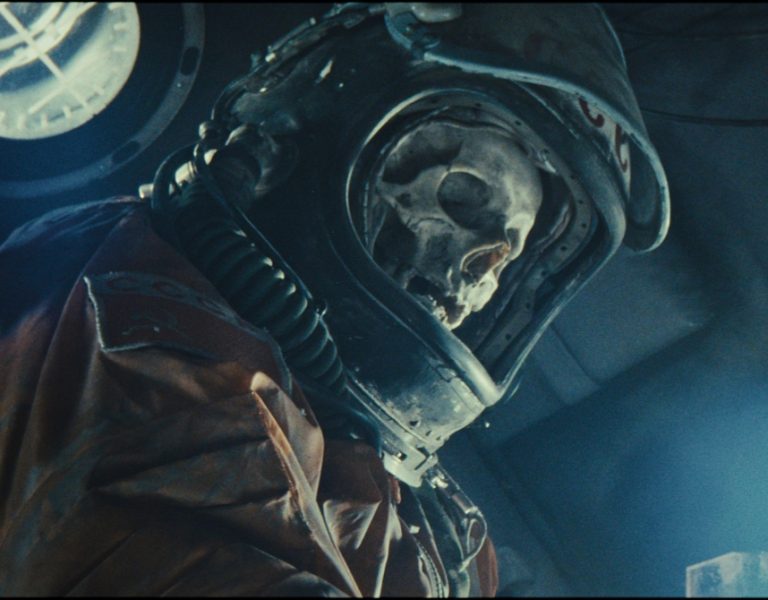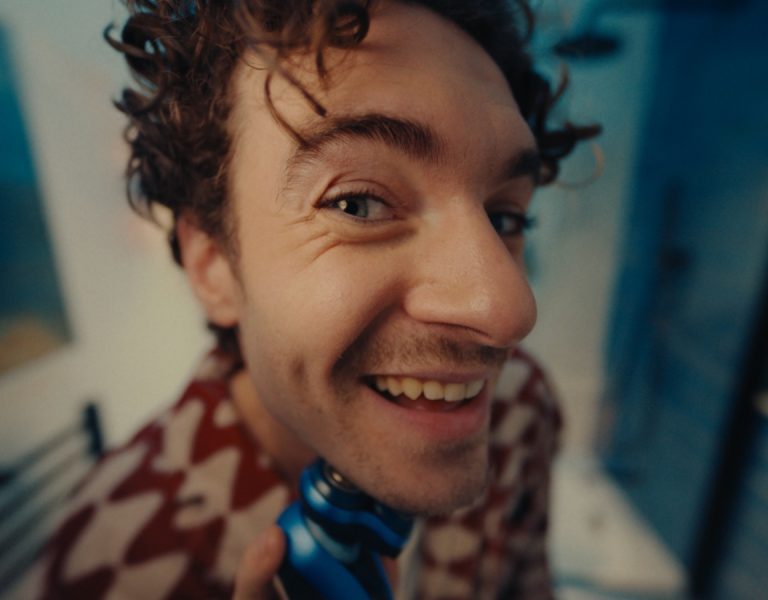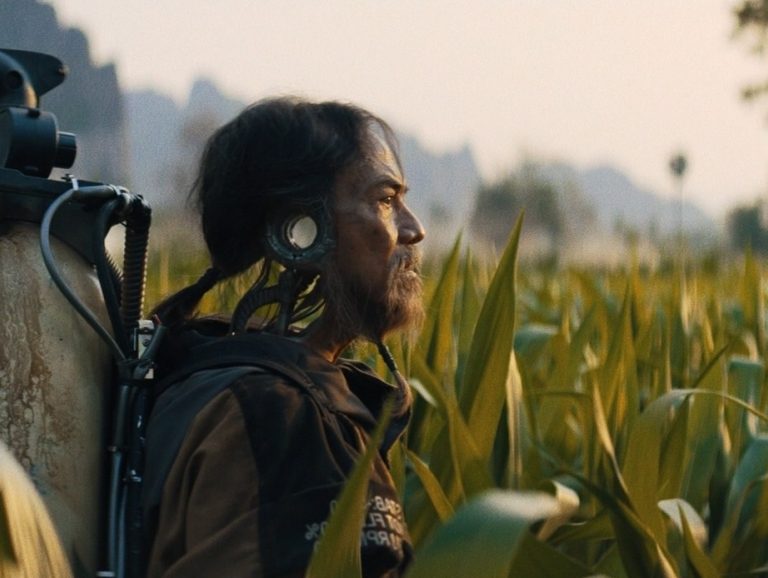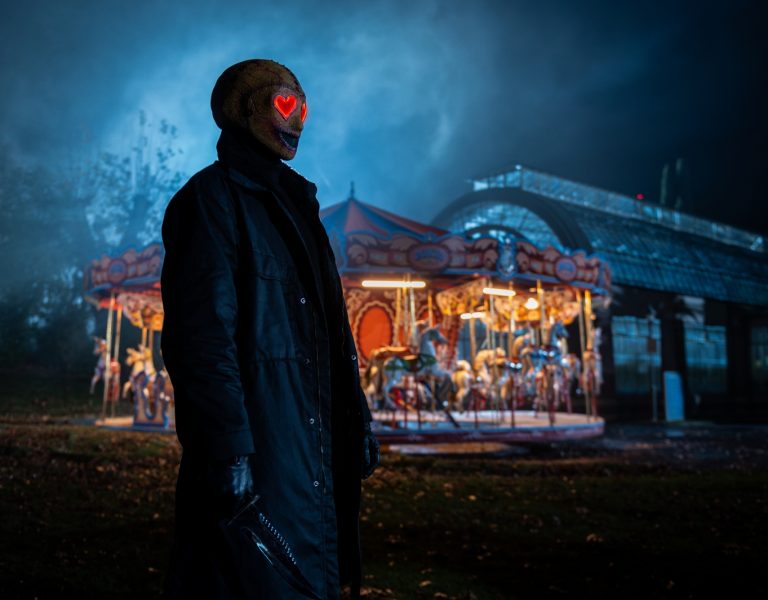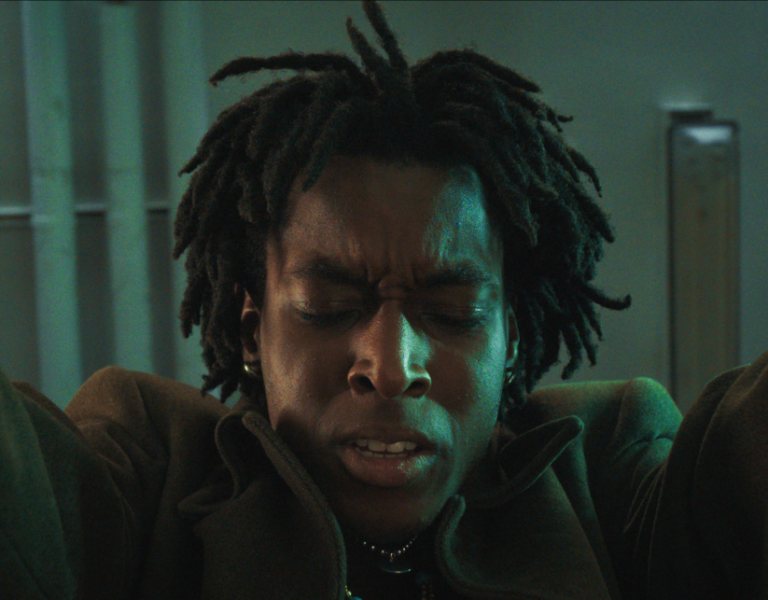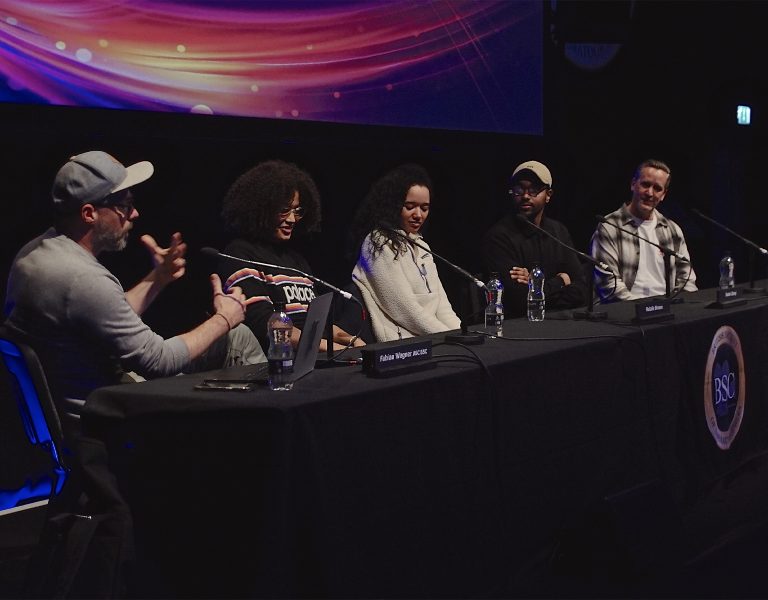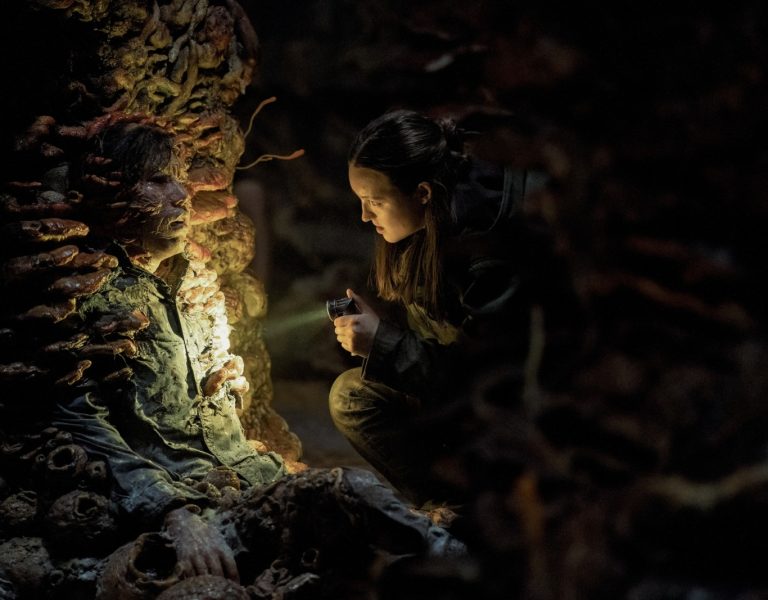Home » Features » Opinion » Across The Pond »
Does a broken Emmy statuette metaphorically represent the entertainment industry’s ongoing transformation and the broader shifts it faces post-pandemic and post-strike?
It is perhaps the perfect metaphor where the entertainment biz stands now, post-pandemic, post-strike, or whether these things are “post” at all, but simply harbingers of bigger changes to come: an earthquake knocking an Emmy statuette off the shelf and breaking off the globe in the hands of the “winged woman” who holds it.
Indeed, explore award lore further, and you find that the globe-like orb in her hands is really supposed to be an atom, representing all the technical achievements the TV academy originally sought to celebrate.
That sundered atom could also represent humanity losing control of its creations, whether fissionable, artificially intelligent, online videos rewriting the brain chemistries of entire populations, or anything else.

The symbolism is rich, but for cinematographer Robert Elswit ASC, it was just life in LA. The gravity-bound accolade plunging to his floor during a temblor was a Daytime Emmy, for an 80s-era CBS Schoolbreak Special, but he’s added plenty of awards since, including an Oscar and BAFTA for There Will Be Blood, part of a long, celebrated collaboration with director Paul Thomas Anderson.
More recently, Elswit followed up with another collaborator, writer/director Steven Zaillian, for whom he shot episodes of the HBO series The Night Of, and now returns for Zaillian’s adaptation of thriller writer Patricia Highsmith’s most famous character, Ripley, for a Netflix series that is both sumptuous in its symbolism, or at least its chiaroscuro, noir-ish shadows, and its black & white cinematography – simultaneously stark and lavish – to boot.
But by ‘shot,’ we don’t mean on film, though Elswit told us he created a LUT to emulate the great FILM Ferrania stock on which so many neorealist Italian masterpieces were filmed, in that unparalleled postwar period inhabited by the directors such as De Sica, Rossellini, Visconti, and others. He further enlisted the help of Panavision’s renowned VP of optical engineering Dan Sasaski in creating some bespoke Primo lenses, to further replicate the look of the earlier masters.
And by “told us,” we mean while standing on a converted soundstage, where Netflix was hosting one of its many pre-nomination receptions; part of a near-daily rondel of panels, speakers, clips and screenings at Sunset Las Palmas Studios. The studio has its own history stretching back to Harold Lloyd comedies, early talkies, I Love Lucy’s first season, Francis Ford Coppola’s ownership while shooting One From the Heart there, all the way through to the streaming era, and now, this year’s FYC – or “FYSEE!” as the streamer brands it – seasons.
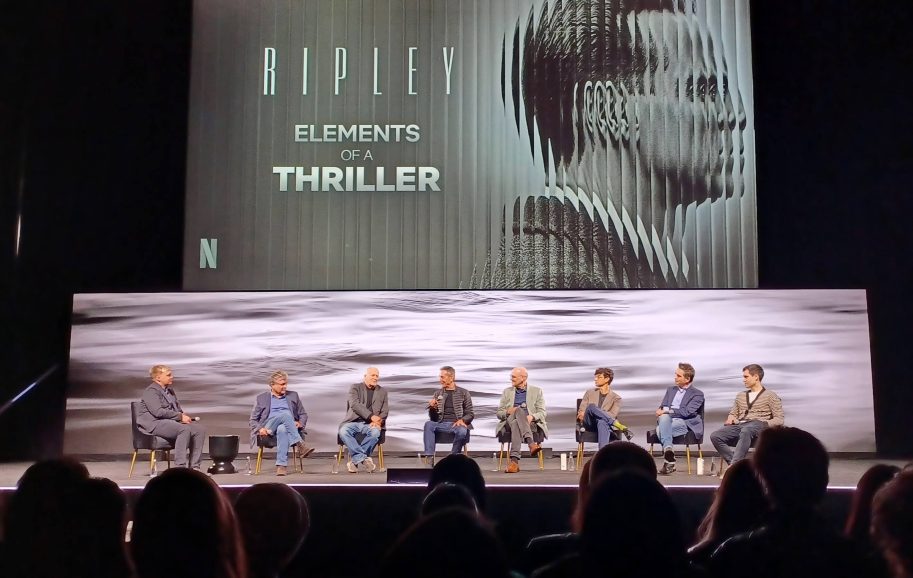
Royal appointment
The evening we were there, Netflix was not only promoting Ripley, for an “Elements of Craft” evening, but other aspects such as production design, music supervision, costumes and more, for shows including The Crown, 3 Body Problem, Griselda, and others.
A few days and a few miles away from our Ripley encounter, the National Geographic series Queens, was having its own meet n’ greet – a “screen n’ greet,” perhaps? – over at The Grove, the faux-village open air shopping mall that sits on the site of a former minor league ballpark, which in turn was built thanks to the oil once pumped out from LA’s nearby, Pleistocene-era tar pits.

But while archaeological layers may come and go, the truism followed in Queens is that far more cultures in the wild – be it bear, lion, hyena, orca, bonobo ape, insect, et al – are structured as matriarchies. In other words, societies where the fellas – in all their puffed up glory – don’t really call the shots in the given culture.
Executive producer and Wildstar film CEO Vanessa Berlowitz was there, along with showrunner Chloe Sarosh, director/producer Faith Musembi, and DP Sophie Darlington (who, along with her also renowned colleague Justine Evans, helped oversee the considerable wielding of cameras that the show’s multi-continent, multi-year – and mult-DP – shooting schedule entailed).
Keep an eye out for much more on Queens in BC’s upcoming wildlife cinematography supplement; it will make for good reading to accompany you through the sloughs and eddies of Emmy season. As Sarosh told us in earlier email interview, before we caught up with her in person near those aforementioned tar pits, the whole project “came about following a meeting between a senior leader at NatGeo, Janet Han Vissering and [Berlowitz, who] pitched a single documentary about two female-led societies, lions and hyenas.” Han Vissering thought of going even bigger and “making it about matriarchies and female dynasties,” which in turn made it a show referred to, by at least one peer in the “Bristol Bubble,” where so many wildlife documentaries are launched or co-produced by the BBC, as “‘that series the girls are making.’ We knew then that not only did Queens need to be good, it had to be excellent.”
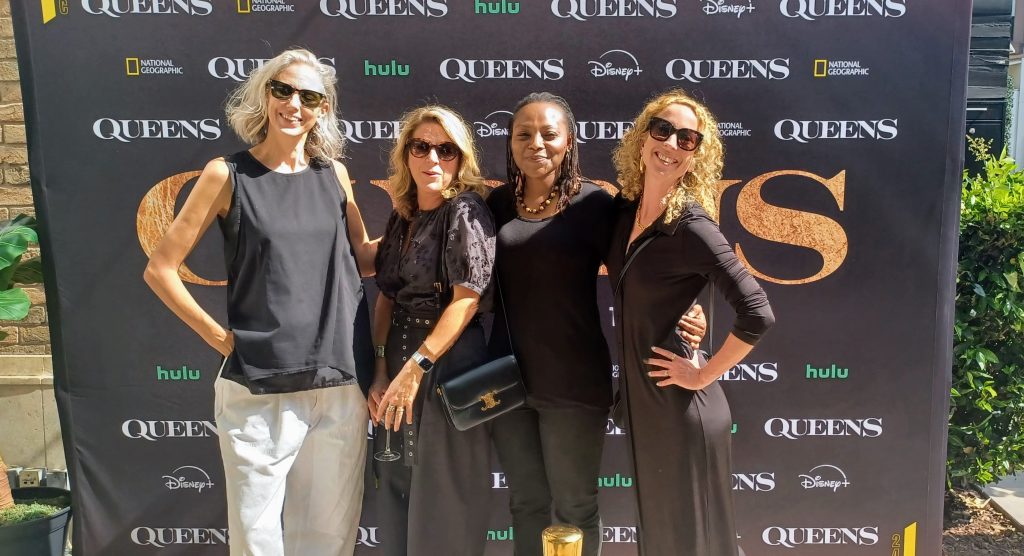
Which – replete with its Angela Bassett narration – it assuredly is. Now the question is whether those busy academy voters will realise it too.
Though there are some shows, such as Netflix’s currently-dropping third season of Bridgerton, that have reached a kind of critical mass with its audience that transcends any particular need for official accolades, like Emmys (though the show has been previously heavily nominated for them, with wins in consecutive years for its hairstyling) As an ostensible “regency romance” that simultaneously both evokes history and upends it, the approach of this season’s main DP, Alicia Robbins, was to “adhere to how it’d been established in years past,” while putting her own stamp on things, as she came on board, taking over from the show’s Emmy-nominated DP Jeffrey Jur ASC, who was busy at the time shooting – speaking of queens – the Queen Charlotte standalone feature, spun from the series.
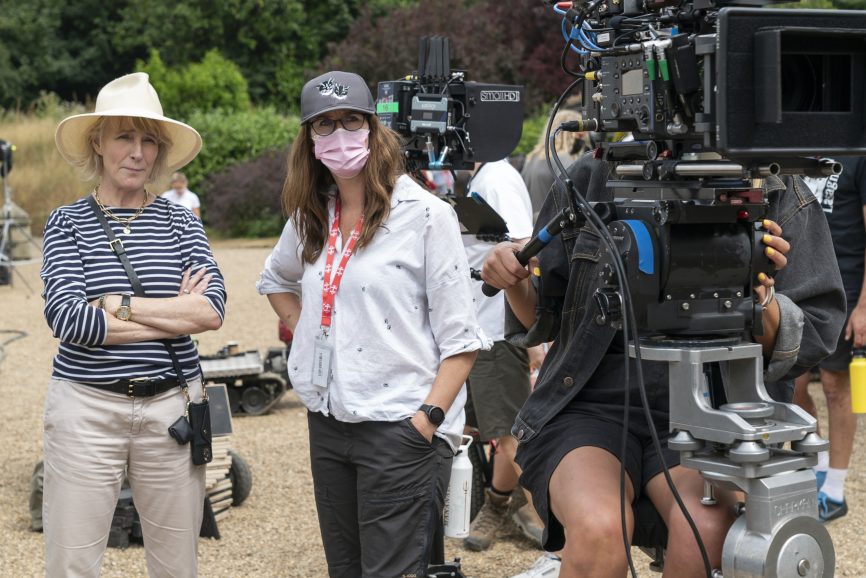
He advised Robbins (who was already an alum for the show’s production company Shondaland, after taking over the reins shooting Grey’s Anatomy in its concluding seasons) to watch Bridgerton to “just get a sense” of how it had already been shot, while feeling free, of course, to bring her own touches, which she also did with new crew – operators, gaffers, etc. – who she pulled together and interviewed herself.
As for our interview, that came a couple of days after Robbins had just been to the show’s NY premiere, where she reports that “people were screaming,” the invited “influencers” were busy posting, and the audience “was filled with a lot of the fan base.”
Was this like being hired on to do a Star Wars or Star Trek show, in terms of committed fandom, we asked? She mentioned there “are already Bridgerton ‘experiences’” for fans, and “sure I’ll be a guest!,” but while “actors, costumes, hair, and makeup – [they] get interviewed a lot, [we] poor little cinematographers get shoved in the corner.”
To be sure, she said that with a lot of good humour, and not to leave things tantalisingly unresolved in the manner of one of the show’s own recurring cliffhangers, but BC’s magazine side will offer a fuller exploration of what this season’s Bridgerton DPs are up to towards summer’s end, and we will return to Ms. Robbins in our next instalment here, after the June batch of episodes drops, given that this season’s most internet-buzzy scene occurs then. We’ll have a “whodunit” – or perhaps a “how shot it,” Sony Venice 1’s, ARRI Signature Primes and all – for your reading pleasure.
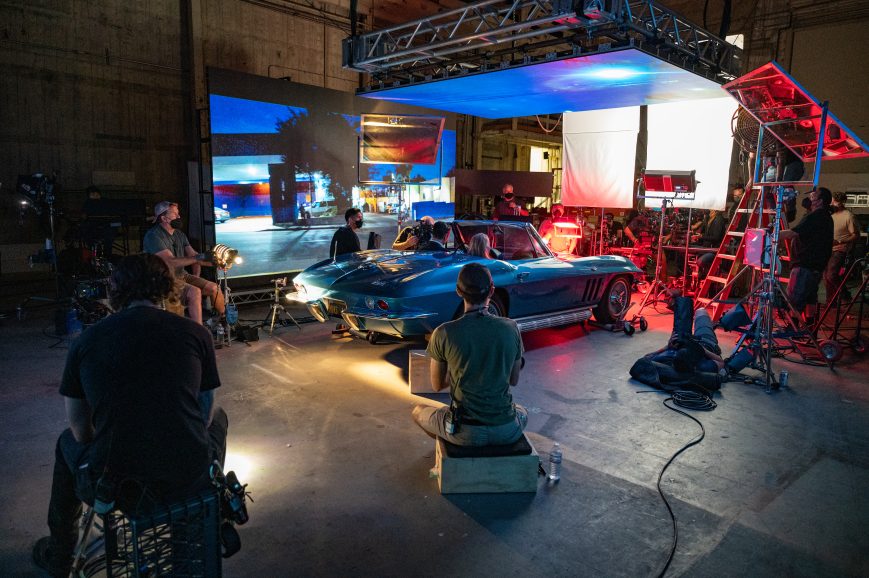
Sweet Apple
And if that’s still seeming a little too mysterious, it could be that we have been put in that frame of mind by Apple TV+’s excellent neo-noir series Sugar, with Colin Farrell as a private P.I., driving around modern day LA in a ’60s-era Corvette, canine companion at his side, with a plot set-up that is about as Ur-LA as it gets, outside of a story about stolen water rights: he’s been hired to find a film producer’s missing granddaughter.
In what has been one of the series’ most interesting and least-well kept secrets, the show veers into an additional genre, in its homestretch – which had to be accounted for in its earlier episodes, too.
Those were shot by César Charlone ABC SCU, once again collaborating with director Fernando Meirelles, with whom he’s produced City of God, The Constant Gardener, and other notable films (nabbing an Oscar nod for the former), as they now find themselves working in American television for the first time.
In a brief email chat, Charlone said (spoiler alert!) that “since we were (also) dealing with a science-fiction story that presented aliens coming from another world, we were concerned that [the show] looked as real as possible so the audience would engage and believe. We wanted to be as far as possible from the stereotyped shadowed, worked out framing of noir cinema.”
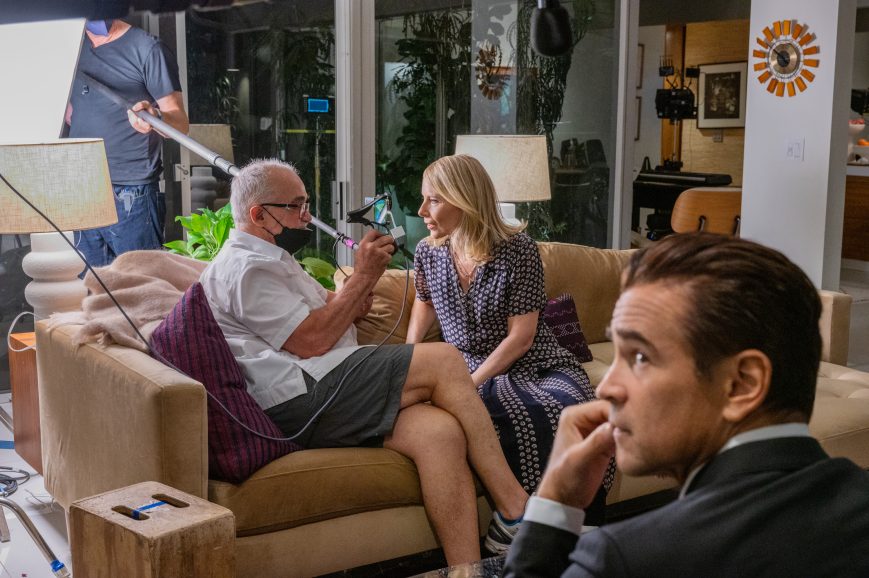
Which is a bit ironic considering that the film is laced with brief clips from movies in the classic noir pantheon – Night of the Hunter shows up a lot – letting us know that this was, in part, how Ferrell’s stranger in a strange land learned how to be a detective in the first place. Though he points out that they wanted the “inserts of old films that we would put in, to be a big contrast with what we were seeing, so we were as far as we could be from the typical noir way of filming.”
He did bring one of his preferred methods of shooting to the project, though, namely “a light camera so I can handhold it all day long and easy to move around and sneak into tight places and reframing and so [on]” – those being a mix of Sony Venice cameras, in remote Rialto mode, with some Panaspeeds glass, though Charlone adds that “I prefer to work with zoom lenses that will allow me to reframe easily without having to spend time changing lenses. So, I had a set of three zooms that would give me wide, medium and tight [shots].” Though the real surprise – though perhaps not, on an Apple series? – was that he would mix the “regular” footage with scenes shot “with iPhones that I would use for specific tight situations like Colin driving a car and many others.
“As master Bob Dylan would say ‘the times they are a-changin’.” So that refers to filmmaking also. Today it’s so much easier, the tools have become a great help, so the technique that I was accustomed to when I started in black-and-white negative, today is ridiculously easier. So why complicate ourselves?”
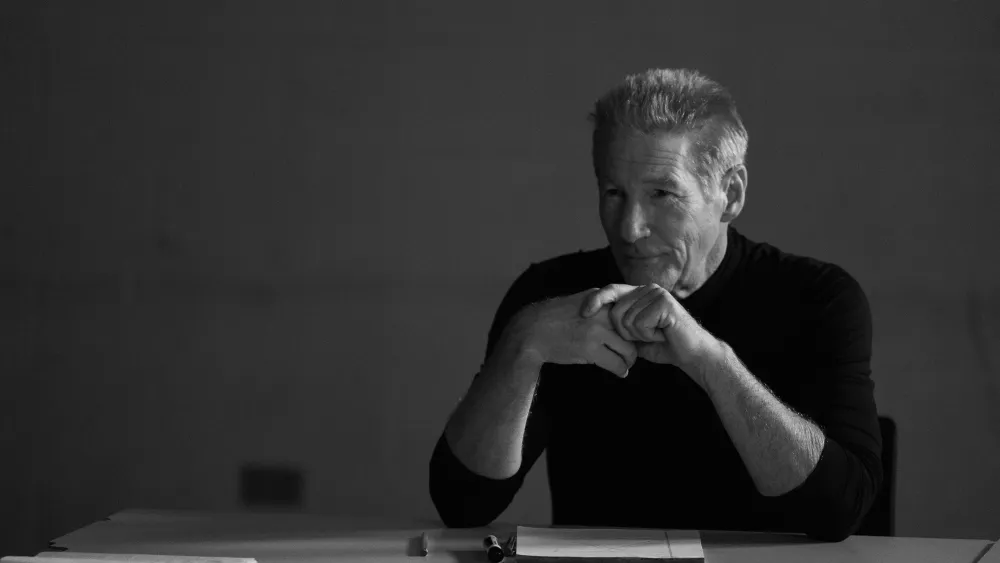
Cannes do
While the times are indeed a-changin’, it’s also been an interesting season for filmmakers hailing from Dylan’s era, particularly Francis Ford Coppola and Paul Schrader, both of whom had films at the recently wrapped Cannes film festival. In the case of Coppola’s Megalopolis, it would appear, according to reports, to be a quite memorable capstone – choose your reason why – for the 83-year-old filmmaker.
While Coppola has indicated this may well be a final, or culminating film, Schrader has not made the same assertion about his more overtly elegiac Oh, Canada, about the last day in a documentary filmmaker’s life, played by Richard Gere, and taken from the novel by the director’s late friend, Russell Banks.
And while we have yet to see either film – both were still looking for American distribution, at deadline time – we did manage to speak to Schrader’s DP, Andrew Wonder, from his AirBnB in Cannes, the day after the film’s premiere there.
Oh, Canada was shot on a mix of ARRI 35s and an Alexa Mini LF Monochrome, along with the delightfully named “Wonderspeeds”, the DP’s own personal collection of modified and rehoused glass. Schrader had become a mentor of his, some twenty years back, with Wonder serving as a 2nd unit director on 2016’s Dog Eat Dog, and he’s “been helping with edits and scripts since I was a teenager.”
Schrader, he recounts, would “write on a word processor”, and Wonder would, in turn, input those scripts into a computer.
But of course there are far more rapid technological changes afoot than what device your keyboard is attached to (if one is even still using a keyboard, or indeed, even “writing” in any conventional or former sense of the word) and Wonder notes that the present juncture is “the agony and the ecstasy of the film business right now”. Observing the even larger marché aspect of the Cannes gathering, where non-festival films are bought and sold for viewer consumption all over the world, he adds that “people clearly love film, but I don’t know if they know why they’re making them anymore.”
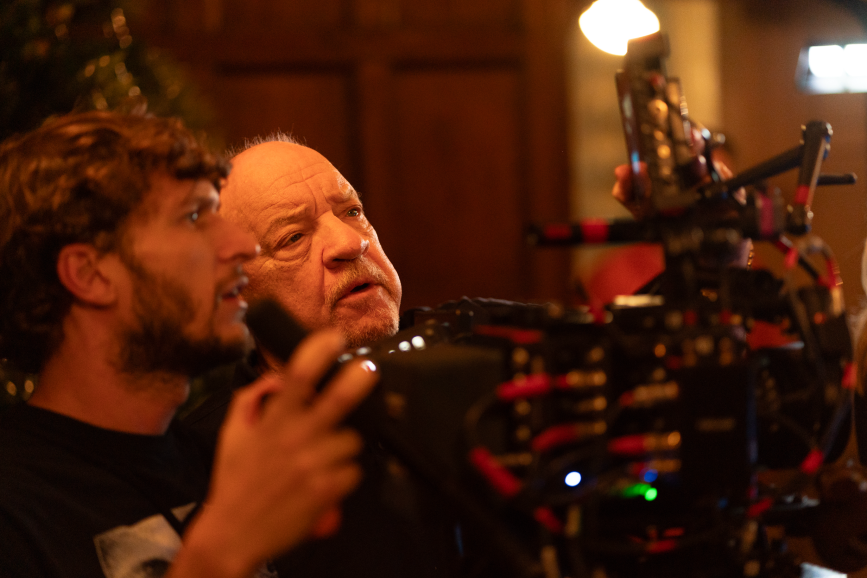
Schrader himself has talked about a time when movies were once viewed as a kind of “town hall,” an important place to have a conversation, or at least raise questions, about life itself, and how we live ours, in the brief time we’re all given.
Is there still room, in other words, for what Wonder calls “lobby movies,” things that moved an audience so much, they immediately began discussing them as soon as they left the theatre?
Cannes, he opines, may be “the last temple we have,” for viewing movies that way. And he was certainly enjoying his time there, calling the fest a mix of “Comic Con meets fashion week.” Which might also explain why he was carrying a Super 8mm Beaulieu concealed in a Prada bag, to get some shots where cameras weren’t necessarily allowed.
Though one might think phones – Sugar’s iPhones, or anything else – could equally, perhaps more easily, steal a shot or two. Though he also refers to film’s particular “alchemy,” even in an age where digital gear – including the “contradictory ISO numbers” Wonder used to change colours around in Oh Canada – let him do some of the same things imagined for film stock in Coppola and Schrader’s era.
Or, at least, their first era.
Still “with the robots coming, we have to make a bet on what this thing will be,” Wonder says, a “last chance to bring narrative about the world” back into movies, however we try to put back, or repair, that showbiz model that got us through most of the last century, and the start of this one.
On which note, Robert Elswit reported he’s still never gotten that Emmy statue fixed.
As for temblors and earthquakes, it’s once again Cine Gear time in LA, unspooling on the Warner Bros. lot for the first time, just as this column is going live. We’ll see you there, or we’ll see you here.
Or both!

